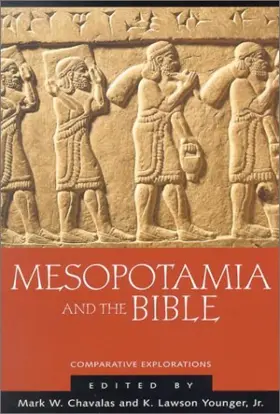

Mesopotamia and the Bible: Comparative Explorations
Contents include:
"Assyriology and Biblical Studies: A Century of Tension"‹Mark W. Chavalas
"The Quest for Sargon, Pul, and Tiglath-Pileser in the Nineteenth Century"‹Steven W. Holloway
"Sumer, the Bible, and Comparative Method: Historiography and Temple Building"‹Richard E. Averbeck
"Syria and Northern Mesopotamia to the End of the Third Millennium B.C.E."‹Mark W. Chavalas
"Syro-Mesopotamia: The Old Babylonian Period"‹Ronald A. Veenker
"Syria to the Early Second Millennium"‹Victor H. Matthews
"Apprehending Kidnapers by Correspondence at Provincial Arrapha"‹David C. Deuel
"The Bible and Alalakh"‹Richard S. Hess
"Emar: On the Road from Harran to Hebron"‹Daniel E. Fleming
"Voices from the Dust: The Tablets from Ugarit and the Bible"‹Wayne T. Pitard
"The Rise of the Aramean States"‹William Schniedewind
"Recent Study on Sargon II, King of Assyria: Implications for Biblical Studies"‹K. Lawson Younger Jr.
"What Has Nebuchadnezzar to Do with David? On the Neo-Babylonian Period and Early Israel"‹Bill T. Arnold
"The Eastern Jewish Diaspora under the Babylonians"‹Edwin Yamauchi

